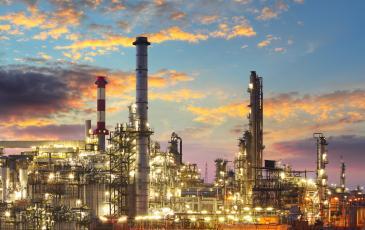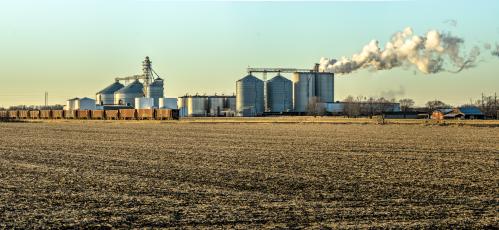AFPM: SCOTUS rules American fuel makers can challenge EV mandates
WASHINGTON, D.C. — American Fuel & Petrochemical Manufacturers (AFPM) President and CEO Chet Thompson today issued the following statement on the 7-2 decision by the Supreme Court of the United States (SCOTUS) determining refiners have standing to challenge California’s electric vehicle (EV) mandates.
AFPM reaction to SCOTUS SRE ruling
WASHINGTON, D.C. — American Fuel & Petrochemical Manufacturers (AFPM) Vice President of Government Relations and Policy Geoff Moody today issued the following statement on the Supreme Court’s ruling in EPA v. Calumet Shreveport Refining, L.L.C.
AFPM response to EPA cellulosic waiver announcement and RVO proposals
WASHINGTON, D.C. — American Fuel & Petrochemical Manufacturers (AFPM) Senior Vice President of Government Relations and Policy Geoff Moody issued the following statement on the 2024 cellulosic waiver announcement and 2026 Renewable Fuel Standard (RFS) Renewable Volume Obligation (RVO) proposal released today by the Environmental Protection Agency (EPA).
AFPM/API: President Trump officially overturns CA gas car ban
WASHINGTON, D.C. — American Fuel & Petrochemical Manufacturers (AFPM) President and CEO Chet Thompson and American Petroleum Institute (API) President and CEO Mike Sommers issued the following statement on today’s signing of a Congressional Review Act (CRA) resolution overturning EPA’s 2024 authorization of California’s ban on sales of new gas cars.
STEM summer camps
Memories from summer camp can last a lifetime, like finally working up the courage to jump off the rope swing or the excitement you felt performing with your friends in the talent show. When it’s a STEM (Science, Technology, Engineering, and Mathematics) summer camp – those experiences can also ignite a lifelong passion.
Enabling the EV market
Narratives that pit the refining and petrochemical industries against electric vehicles (EVs) ignore the symbiotic relationship of these industries. If you review the history of EVs – you will see that refining and petrochemical companies have been foundational to the EV market all along and will continue to be far into the future.
Storm-ready: Refining and petrochemical industries prepare for hurricane season
Hurricane season is coming — beginning June 1 and lasting through the end of November — and with it comes unpredictable storms and heightened risks. With forecasts predicting up to 19 named storms and 10 hurricanes — the refining and petrochemical industries are prepared.
Are we headed for a record summer driving season?
AAA expects roughly 45 million travelers to head out of town and go at least 50 miles from home over the upcoming Memorial Day weekend, breaking a 20-year travel record in the process. The vast majority of these travelers—nearly 90%—are likely to be road warriors, driving cars and trucks fueled by American-made gasoline.
AFPM & API: U.S. Senate votes to overturn CA gas car ban in a victory for consumers, manufacturers & energy security
WASHINGTON, D.C. — American Fuel & Petrochemical Manufacturers (AFPM) President and CEO Chet Thompson and American Petroleum Institute (API) President and CEO Mike Sommers issued the following statement on the Senate’s bipartisan passage of a Congressional Review Act (CRA) resolution overturning EPA’s 2024 ruling authorizing California’s Advanced Clean Cars II (ACCII) ban and its spread to states around the country.









